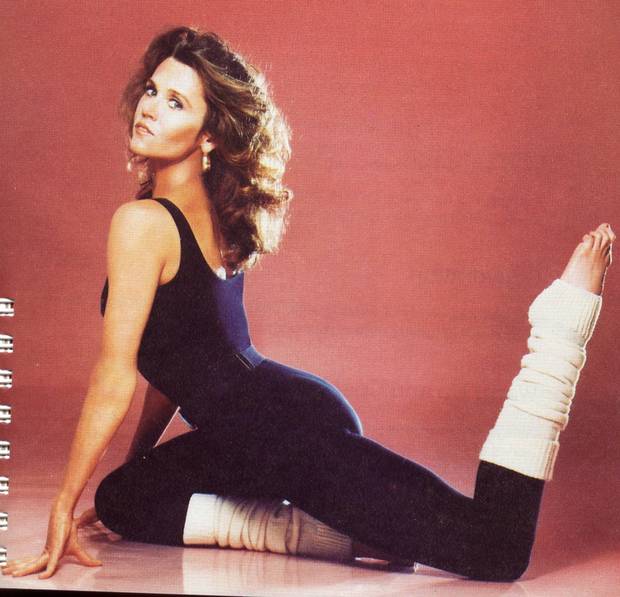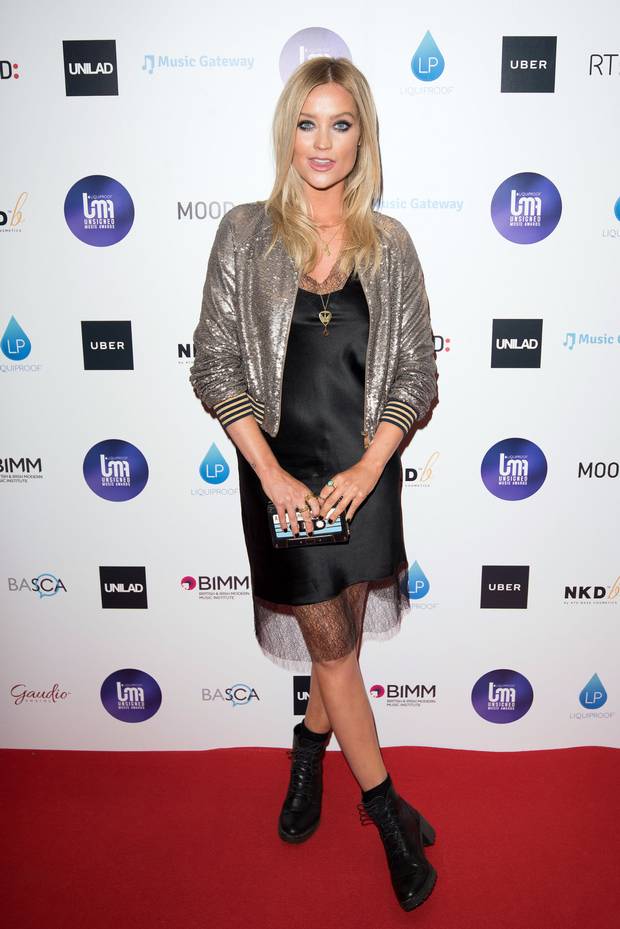Frankly, new is an overstatement for most of them – something we know very well – and yet, we are not immune. We fall in enthusiastically with the charade, investing our hopes in the newness on offer. And we do it year after year, despite the paucity of results. We park everything we know and have learned, and embrace the fantasy – that new is possible; that new will be better. The question is, why?
Make it new – that lofty injunction of the modernist manifesto was supposedly coined by Ezra Pound, who used it as the title of his 1934 collection of essays. In fact, the phrase dates back to the first king of the Shang dynasty in China (1766 BC), who apparently had it inscribed on a wash-hand basin.
Pound, however, knew a good thing when he saw it. The appeal of the new is powerful and seductive, overriding common sense and painful experience.
New copybooks, new workouts, new teatowels, new jeans, new superfoods. Even when, often, they are the same as the old, or certainly no better, we love them. Their appeal is straightforward – they are crisp, fresh, unspoiled. They carry the magic of promise: with them, we too will be new. We will be ‘better’ than our old selves.
In that new copy, our handwriting will be clear, there will be no dog-eared corners or doodles. The pristine pages will be honoured by our new, pristine selves. In those new jeans or boots, we will be smart, sexy, elegant. In the new house we will be better people, hosting elegant weekend suppers with interesting people rather than slumping, exhausted, in front of Netflix. New is clean – a slate on which our imagination can draw.
As CS Lewis puts it: “There are far, far better things ahead than any we leave behind.” Debatable, frankly, but arresting. An endlessly seductive idea.
And the seduction is scientifically sanctioned. We aren’t just being self-indulgent and foolish in chasing new stuff. We are actually hard-wired to go for novelty. There is a particular part of the brain, the substantia nigra/ventral segmental area (SN/VTA) that responds to new stimuli, and engaging it enhances brain plasticity. Simply put, new things and experiences stick better to memory.
Novelty puts our senses on high alert, which in turn means we retain more. Dr Meik Wiking, the man who ‘invented’ hygge – or at least brought it to the masses – has a new book, The Art of Making Memories, in which he brings together research drawn from the world’s biggest study on happy memories, and concludes, “New experiences are more likely to stick.”
Presumably, the opposite is also true; that the law of diminishing returns applies, and doing the same thing over and over gradually gives less of a return. So leading our same lives results in weariness and disengagement, but if we throw something brand new into the mix, the brain fires up, alert and receptive. This is why holidays are good; why change really is as good as a rest, as the saying has it.
Except there is a flipside. The problem is, we can’t entirely trust our brains. We should know this by now. How often have they let us down in the matter of eating, say? Steering us towards the high-sugar, high-fat option – otherwise known as a doughnut – that will trigger a dopamine hit, rather than the more sustainable but less-instantly-gratifying handful of Brazil nuts?
So just because the brain, with its primitive hard-wiring, inclines us towards something, doesn’t mean to say that something is entirely beneficial. Being alert and inspired by something entirely new is good – endlessly seeking novelty is not. It means inevitable disappointment, not to mention the kind of consumer over-consumption that is one day going to kill us all.
Next!

Our brains’ inclination to new stuff is such that even when the ‘old’ (or perhaps ‘original’ is a better description here) versions are just as good, and often cheaper and easier to get, we are still seduced by rebooted, re-branded versions. Hence ‘mindfulness’ rather than fuddy-duddy old ‘meditation.’ See also ashtanga – really, it’s just yoga. Except we feel better about ourselves – zippier, more dynamic, hotter, more like Madonna, pictured above, or Gwyneth Paltrow, pictured below, when we say, ‘I’m off to ashtanga,’ rather than ‘I’m off to yoga,’ which we worry still carries just a whiff of patchouli and tie-dye.

So we have ‘trail-running’, a fancy name for getting out into the mountains and running not-very-fast because the terrain underfoot is rocky and treacherous. Also HIIT, or high-intensity interval training, so beguiling in theory: ‘Do less, get more’. In fact, it is simply ‘shorter, harder’, as favoured by the dedicated and time-poor forever, but now flourishing under another name and backed-up by scientific jargon about “releasing brain-derived neurotrophic factor (BDNF), a protein that protects nerve cells, promotes plasticity and may even help regulate diet and body weight…”

Bone broth – it’s just stock, people. Plain old stock, the same as your grandmother has been making forever, even if Salma Hayek, pictured above, and Reese Witherspoon, pictured below, are lauding it. Probably your grandmother didn’t add fresh tumeric root and ginger, but probably, too, it was the better for that.
Porridge – still best when it’s oats, milk, water, and a pinch of salt. Don’t put chia in it, or millet, or make it with coconut milk. No matter what the influencers tell you about ‘super-charging’ your eating habits. And sorry, but honey won’t save your life or help you lose 10lbs. It’s just honey, even when you add ‘manuka’ or ‘Irish heather’ to the label.

Frankly, the real kudos here is probably going to the smarty pants who have figured out how to profit from our rubber-necking, making money out of things that ‘belong’ to us all. No one can patent yoga, for example, but they can, and have, set out to own the newer versions of it. Equally, ‘mindfulness’ is open to everyone, but the multitude of books and courses teaching us how to do it properly all cost. And as for the price difference between, say, oats and chia, or sugar and lucuma powder, well, that tells its own story.
In Whom Do We Trust?
One curious part of the newer-is-better notion, is the way we sometimes spin that on its head and look towards ‘old-new’, ie the endorsement of the old in the service of the new. Really, our looking back is really just a manifestation of looking forward: the urge for novelty, thwarted by the obvious limits (even ‘new’ is finite), packaged as rediscovery.
So we turn to ancient grains from South America, rediscovered and newly sprinkled on to the granola of clean-eating influencers. We seek the ancient wisdom of shaman who used psychadelic herbs and plants as a form of healing – we watch it co-opted by techies and self-diagnosers, and brought to a draughty yurt in Midlands field near you.
In general, we trust Eastern things far more than Western, particularly where health and spirituality are concerned. Although we have learned to put our faith in ‘Scandinavian’ when it’s a question of domestic comfort or the correct celebration of major holidays. We incline towards Japan in matters of longevity, and Italy when it comes to lifestyle.
All these invocations of place and culture invest the perfectly ordinary – lighting a fire, eating fresh fish, stretching, having a coffee – with an exotic element that means we take them to heart because they are, to us anyway, new.
Silicon Valley bucks the trend for ancient-is-better, in that we have added them to our list of ‘go-to gurus’, and are willing to take seriously many of the lifestyle systems they devise, including ‘dopamine-fasting’ (basically, switching off in order to recharge, and better enjoy when you switch back on again); ‘micro-dosing’ (already much talked about and practised in the 1960s), and ‘walking meetings’ (older than forever) – even when these are simply cherry-picked and reassembled. Here again, the perfectly obvious and accessible – ‘take time off, people!’ – was of limited interest, until a few smart kids with too much money and god complexes labelled and endorsed it.
Hope Springs

Neuroscience aside, there is a major psychological component to the love of shiny new things. It’s rooted in the cycle of hope and disappointment on which all of us turn.
What we love is the gleam of hope that newness brings. As if new things can bring a new us. The old has let us down, broken the sacred contract whereby we invested in it – our time, our money, our expectation – and it failed us. How? By not transforming us. The new mattress-topper didn’t, in fact, make us sleep any better. The new tights didn’t give us legs like a gazelle, the new exercise regime didn’t transform us into Rosanna Davison or Rob Lipsett, pictured above. The new diet didn’t give us abs like Roz Purcell, pictured below .
So now we want rid of it – the embarrassing reminder of failure – and to start over, with a fresh, clean page, and new hope: so what if the Atkins diet didn’t work, this time we’re going Paleo, and we will be magnificent.

For me, it’s skincare and supplements. I have weaned myself off believing that a new dress will give me back 10 years, but show me a tube of over-priced serum promising wonders, or a foodstuff offering boundless vitality, and my fingers itch, my heart races, one part of my brain floods the other with images of a glowing, youthful me. And even though yet another part, the bit where my Irish grandmother resides, says, “Don’t be ridiculous. You know very well that eating properly, a good night’s sleep and some exercise in the soft Irish rain is all you need”, I cannot resist. Thirty years into this cycle, and I still haven’t learned.
In fact, arguably, the more disappointed we have been in the past, the more determined we are that we will, eventually, find The One. Thus consumers of self-help books do not stop at one or two; they buy, and buy again, always looking for the change that will work miracles. Snap for those who seek out the ultimate diet or exercise regime. It is a life-long quest, a journey without end. Those immune to the appeal of transformation, are immune. They ignore it all, by and large. But those of us susceptible – we consume over and over, always convinced that the real deal is finally there for the taking.
Pace of Change

Even this would – might! – all be ok if it wasn’t for the recent acceleration of the cycle. We are now moving so fast through ‘hope/disappointment/ indifference/new hope’ that soon we will be recycling, not ancient grains/wisdom/spirituality, but stuff from the 1980s. The Jane Fonda (pictured above) workout, maybe? Body Shop Dewberry Facial Wash, or the Beverly Hills diet (an early food-combining exercise) so beloved of Linda Gray and Engelbert Humperdinck?
“There have always been trends, but what you would have found before the digital age was that they lasted longer,” says psychologist Dr Gillian Moore Groarke. “Now, with our greater exposure to social media, they are much more short-lived. I don’t think the goal of perfectionism and making life better for ourselves has changed hugely, but the element of choice has significantly and exponentially increased over the years of social media.”
And this is bad? “It isn’t great. Basically people are now looking for the quick fix much more. I have people coming into me now talking abut following various diets they have found online. The fine line is that a lot of people become very obsessional, and that crossover into the obsessional creates anxiety, and we’ve seen a huge increase in anxiety over the past few years.”
It is, she says, a question of weaning people off the idea of a quick fix. “We’ve always had things like yoga, but we now know that to get the benefit from it, one has to do it over a lifespan. It’s the same with mindfulness. They’re not going to be quick fixes. That’s where you have to try and teach someone, ‘This isn’t going to be the Holy Grail.’ When I see patients, what I say to them is: the changes you make now are changes for the rest of your life. Are you in the frame of mind where you want to make positive choices and change? Because if you are not in the frame of mind, no change is going to take place. You cannot rely on external factors. You can only rely on yourself.”
We know this. Of course we do. The problem is we can’t keep knowing it. We get distracted by the sparkly promises of better, but also by the attractive notion of sharing responsibility. Yes, we are in charge of our own health and well-being. But, we want other stake-holders in there too. We want to feel that better is possible, and that others are invested in the idea of it, even when we secretly know they are mostly just selling us stuff. Being told ‘you can change’ is the rush; someone else’s belief in our perfectability – that’s the driving force. We may be paying them for the belief, the belief may even be an illusion, but it is necessary.
Making it new
In a country that fluxes and soul-searches as often as Ireland does, there is much that has been old and is suddenly new – our food, culture, icons, pastimes. Here are some of our favourites
Culture
Riverdance; the classic example. A despised art-form suddenly elevated to national treasure by the addition of a stronger beat, and the fact that the rest of the world loved it. See also RTE’s Centenary, and particularly Sibeal Ni Chasaide: traditional Irish culture standing tall.

Celebs
Angela Scanlon, Liz Bonnin, Amanda Byram, Laura Whitmore, pictured, and every other Irish actor/ presenter/celeb who left, succeeded, and came back to be hailed as ‘new’.
Crochet
Roundly despised as a way for grannies to make doilies, until Chanel, Dolce & Gabbana and Missoni sent crochet down the catwalk and Sarah Jessica Parker and Rihanna, pictured right, began wearing it.
Lainey Keogh
Taking old Irish fabrics and techniques, turning them into seriously cutting-edge design.
The Wild Atlantic Way.
The seascapes, beaches and cliffs have been here forever, but somehow they didn’t add up to much until branded as the Wild Atlantic Way.
Food
Honey, seaweed, butter and all the rest of our traditional fare, reinvented by Rachel Allen et al as food fit for kings.
Poetry
Strictly for tourists and school kids until Shaunna Lee Lynch, Stephen James Smith and Beau Williams kicked it into urgency with a spoken-word element.
Magic mushrooms
Strictly for students until Silicon Valley got on board and rebranded a mild trip as ‘therepeutic micro-dosing.’ Do not try this at home.
Sunday Indo Life Magazine
